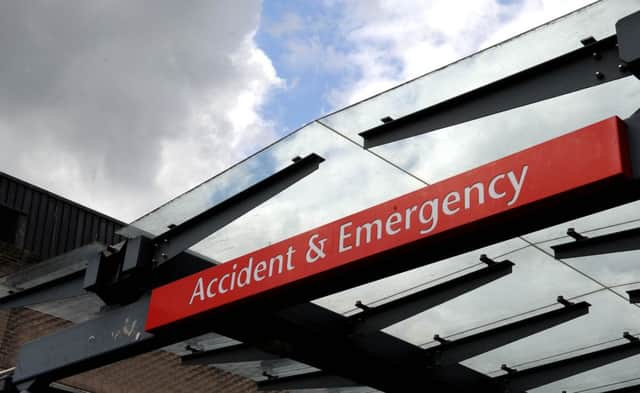Lizzy Buchan: It may be time to rethink A&E targets


Many people will have experienced the uncertainty and fear that reverberates through those halls, and will recoil at reports of eight, 12, even 16-hour waits for treatment.
The Scottish Government waiting times targets are among the toughest in the UK, demanding health boards treat 95 per cent of patients within four hours as an interim target, with 98 per cent the eventual aim.
Advertisement
Hide AdAdvertisement
Hide AdBut as the NHS bubbles up like a pressure cooker, questions have been asked about whether these targets are constructive in delivering the best patient care.
Dr Peter Bennie, BMA Scotland Council chairman, described the limits as “an expensive obsession” for politicians and journalists in a stern speech to the organisation’s annual conference last month, where he warned politicians not to play games with the NHS ahead of next year’s Holyrood election.
Today leading clinicians from the Academy of Medical Royal Colleges in Scotland have published a report citing “deep-rooted and systemic failings” in the Scottish NHS.
The report identified “inappropriate targets” as a distraction for a stretched workforce, leading to a loss of basic compassion for patients and rising stress levels on an already depleted staff.
Scotland’s chief medical officer Catherine Calderwood had to visit Ninewells Hospital, in Dundee, in June after whistleblowers incorrectly alleged that surgeons were barred from seeing patients in A&E in order to manipulate figures.
While she dismissed the claims, the episode provides a disturbing vision of how prioritising these targets could compromise patient safety.
However ministers insist that the targets help them to identify problems quickly and take remedial action.
Troubleshooters were parachuted into the £842 million Queen Elizabeth University Hospital Glasgow last month, after it reported the worst waiting times in the country.
Advertisement
Hide AdAdvertisement
Hide AdSince then the number of people waiting for longer than the four-hour limit has improved dramatically.
Health secretary Shona Robison has called for a national debate on an alternative future for the NHS, and politicians, clinicians and anyone with an interest in the NHS should heed that call. With recent news of chronic staffing shortages forcing the closure of a children’s ward at St John’s Hospital, Livingston, and warnings of a shortfall of up to 900 GPs by 2020, it is clear that business as usual is not an option.